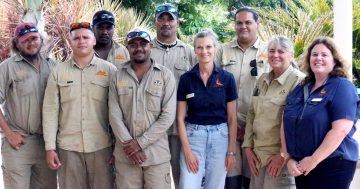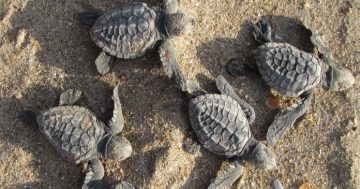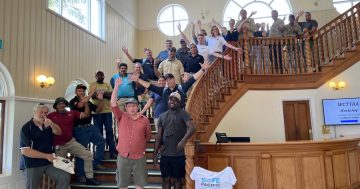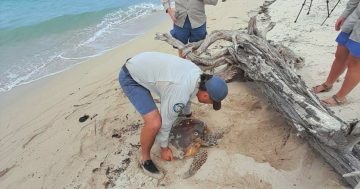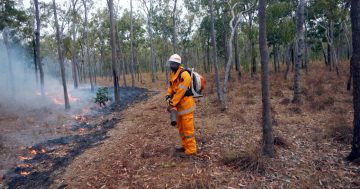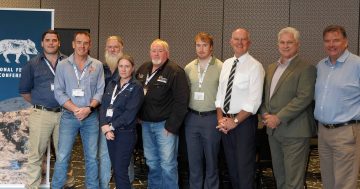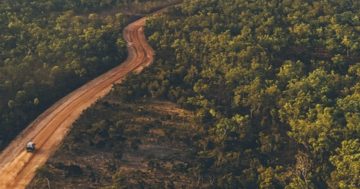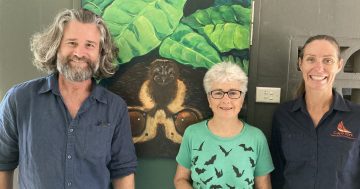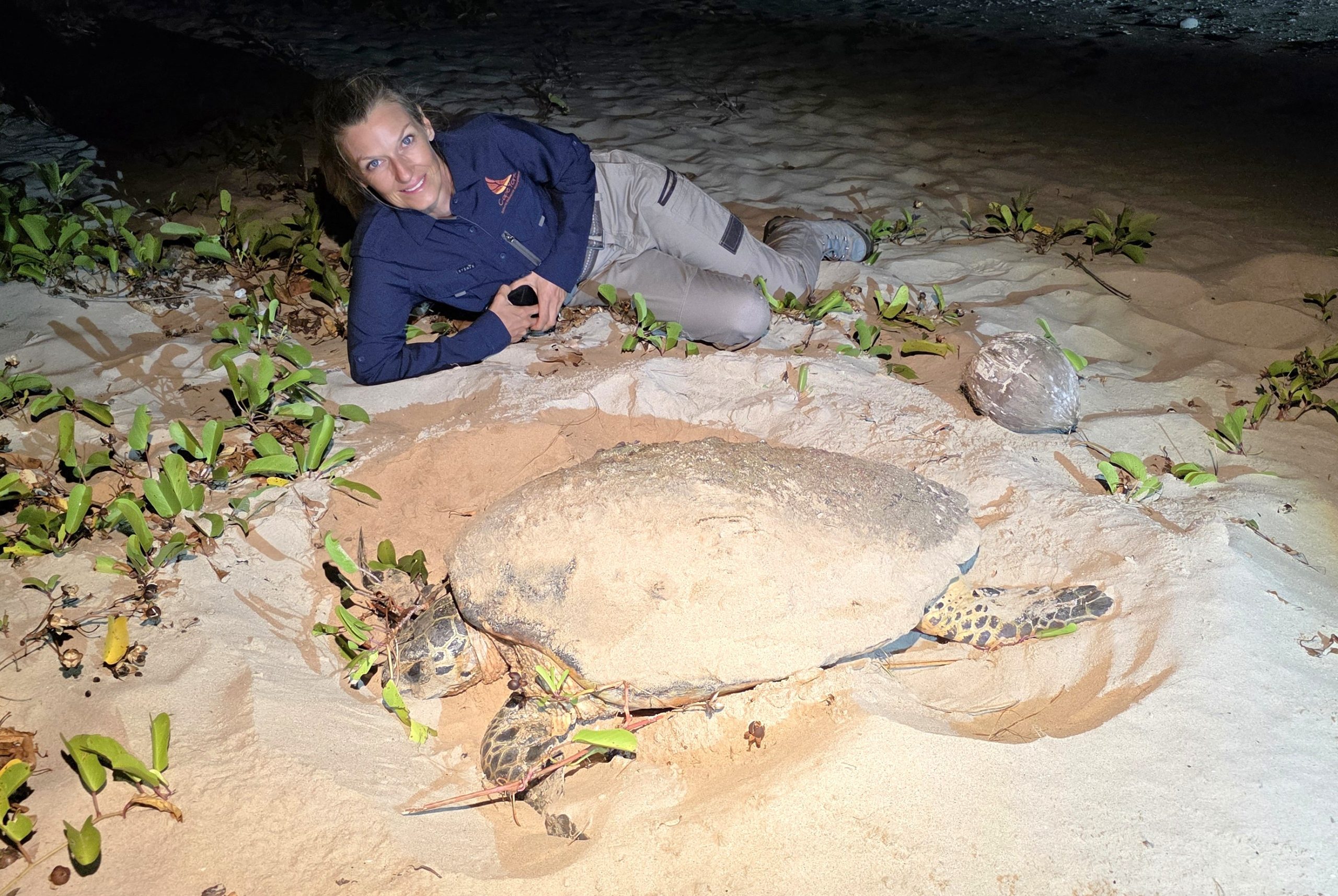
Project co-ordinator Dr Manuela Fischer says the Eastern Cape York Turtle Conservation Project will embrace learnings from operations on the western side of the peninsula. Photo: Supplied.
An award-winning turtle protection program from western Cape York is being replicated on the peninsula’s east coast to improve hatchling survival rates of endangered marine turtles.
Co-ordinated by Cape York Natural Resource Management, and in collaboration with Indigenous ranger groups and the Queensland Parks and Wildlife Service, the Eastern Cape York Turtle Conservation Project will increase the nesting success of turtles through targeted predator control and nest protection measures.
Far North Queensland’s east coast is home to some of the world’s highest-density nesting populations of the endangered green turtle and the critically endangered hawksbill turtle, however, Cape York’s feral pig population poses a major threat by preying on eggs and hatchlings in nests.
The new program is based on the approach developed by the Western Cape Turtle Threat Abatement Alliance (WCTTAA), which has significantly increased hatchling survival rates along 800 kilometres of western coastline.
WCTTAA is a partnership of Indigenous land and sea owners and managers from the Northern Peninsula Area, Napranum, Mapoon, Pormpuraaw, Aak Puul Ngantam and Kowanyama.
Project co-ordinator Dr Manuela Fischer said WCTTAA rangers would work with eastern Cape York Indigenous ranger groups to share expertise in turtle monitoring and data collection.
“Establishing and maintaining consistent monitoring programs is vital for marine turtle conservation,” she said.
“In the long term, this will help ranger groups apply conservation strategies in areas where nest protection and pig control are most needed.”
The project directly addresses climate-related threats to turtle survival, including concerns about turtles currently nesting on offshore islands.
“It’s predicted that these island nesting sites may become permanently inundated in the future,” said Dr Fischer.
“By reducing feral pig numbers on the mainland, it could make more elevated beaches on the east coast a viable alternative for these globally important populations.”
Mike Gregory, project co-ordinator for the Department of the Environment, Tourism, Science and Innovation’s Nest to Ocean Turtle Protection Program, said “replicating this initiative on the eastern side of Cape York Peninsula will make a significant contribution to the conservation of marine turtles in Australia”.


